
Fresco is a breathtakingly beautiful form of monumental painting
Fresco is an ancient form of monumental visual art, one of the oldest techniques of wall painting using watercolors on wet plaster. In modern times, frescoes are commonly referred to as any type of ancient wall painting, regardless of the execution method and type of paint.
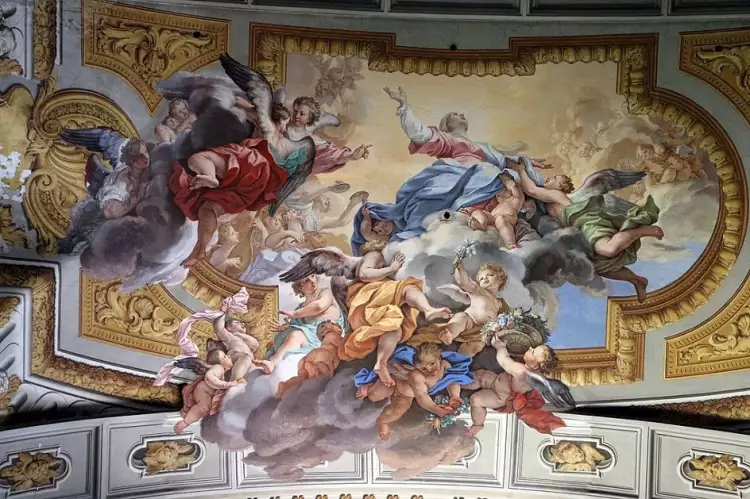 Fresco. Andrea Pozzo. The Triumph of St Ignatius, 1690
Fresco. Andrea Pozzo. The Triumph of St Ignatius, 1690
Frescoes by old Italian Renaissance masters still adorn the walls of many churches and palaces. This is explained by the unique feature of the ancient painting method. The lime, which is part of the plaster, forms a thin calcite film on the wall after the paint is applied. This invisible, transparent layer protects the artistic image from the destructive effects of moisture.
Types and Techniques of Frescoes
Frescoes are divided into the following types based on the technique of execution:
- Buon.
- Secco.
- Mezzo.
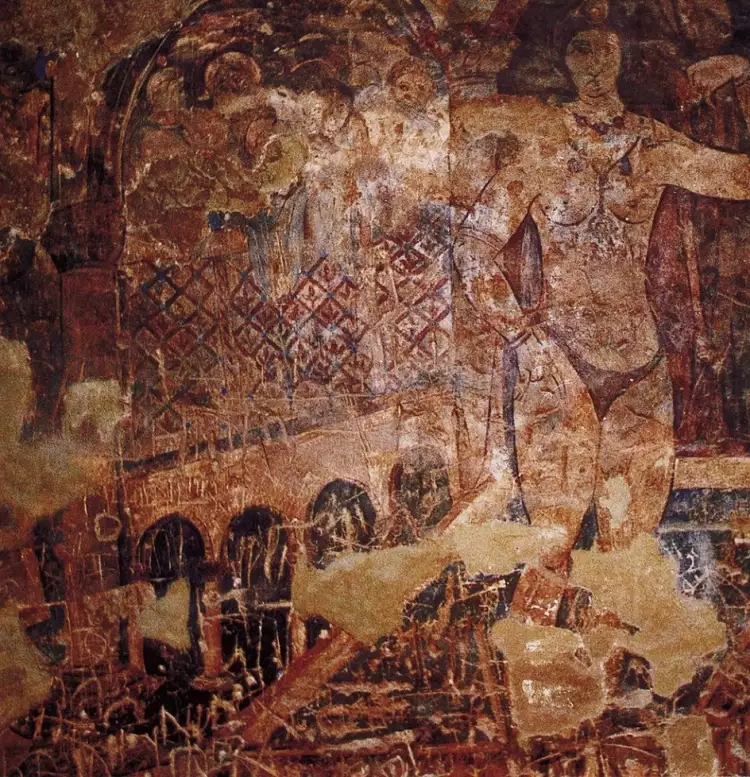 Fresco. An image of a bathing woman in the Quseir Amra Castle. Jordan. VII century AD
Fresco. An image of a bathing woman in the Quseir Amra Castle. Jordan. VII century AD
Buon fresco is the oldest and technically complex type of fresco. Before starting the main work, a thin additional layer of plaster was applied to the dry plastered surface of the wall. The fresco painter then created the image using water-soluble paints on this layer.
The main advantage of buon fresco is that the coloring pigments penetrate deeply into the pores of the wet plaster. This ensures the good preservation of the artwork for many years, even centuries.
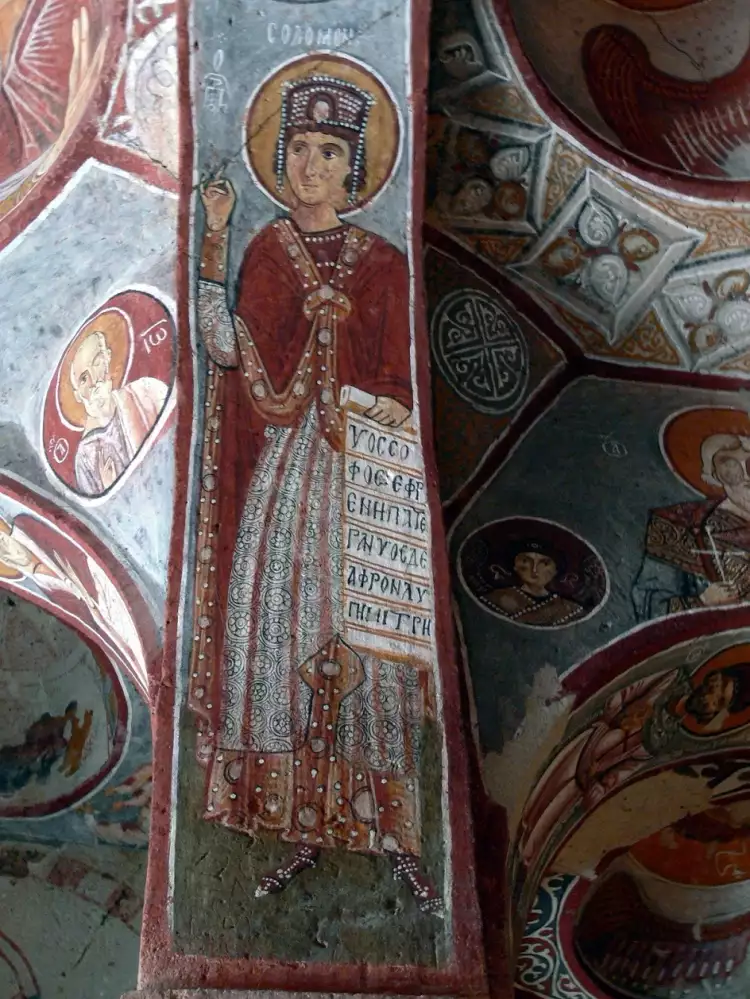 Fresco. Byzantine fresco, 11th century
Fresco. Byzantine fresco, 11th century
However, this technique had a significant drawback. The master could work on the image for a limited time, approximately 7-9 hours, until the finishing layer dried. After this period, any untreated plastered areas had to be removed. Additionally, no corrections could be made to the finished image. If significant errors were found, the top layer of plaster had to be removed, and the work completely redone.
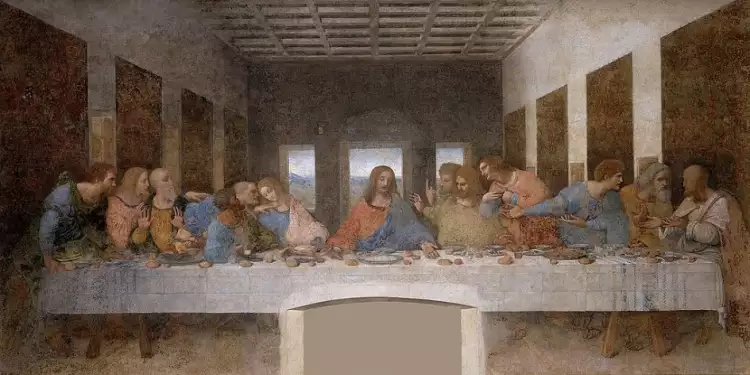 Fresco. Leonardo da Vinci. The Last Supper, 1497
Fresco. Leonardo da Vinci. The Last Supper, 1497
Over time, the secco technique replaced buon fresco. The dry plastered wall was carefully treated with abrasive materials to make the surface rough. Then, the artist applied the painting with tempera or oil paints. This method was more convenient to work with but resulted in less durable and long-lasting images.
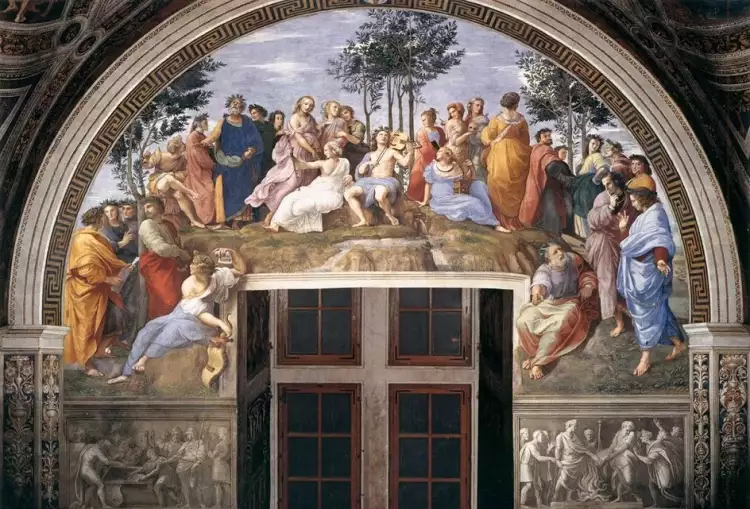 Fresco. Raphael. Parnassus, 1510
Fresco. Raphael. Parnassus, 1510
After numerous experiments and creative explorations, a third technique, mezzo fresco, was developed. Its essence was to moisten the dry surface of the wall just before starting work. The artists then painted on the prepared wet area. Mezzo fresco eventually became the most sought-after technique, allowing artists to both simplify their work and ensure the long-term preservation of the images.
The History of Fresco
The fascinating and venerable history of fresco spans many millennia. The age of the oldest specimen of this art form, wall painting of Zimri-Lim, dates back over 3700 years. This unique cultural relic was discovered during archaeological excavations in what is now modern-day Syria.
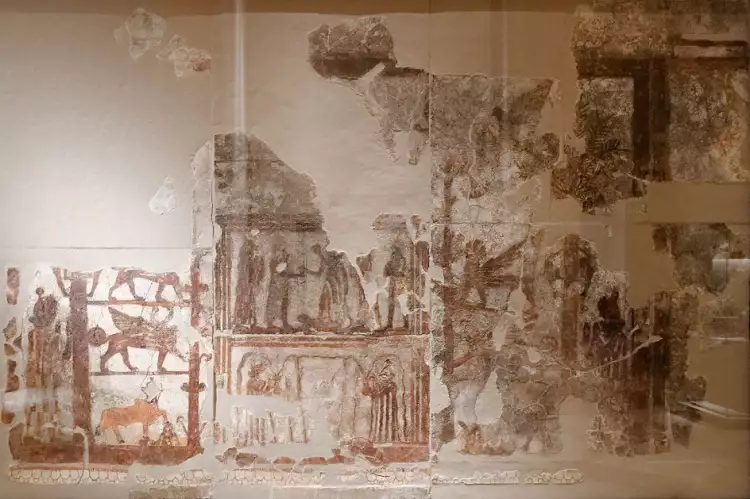 Fresco. The painting of the palace of Zimri-Lim. 17th century BC
Fresco. The painting of the palace of Zimri-Lim. 17th century BC
Fresco painting was also known to the Greeks, Romans, and Indians. In total, the global cultural heritage today includes several thousand paintings that are over 2000 years old.
From Ancient Rome, fresco spread throughout the Byzantine Empire and later across Europe. Ancient wall paintings using the plaster technique were in demand in Kievan Rus, as well as in modern-day France, Spain, Germany, and Romania.
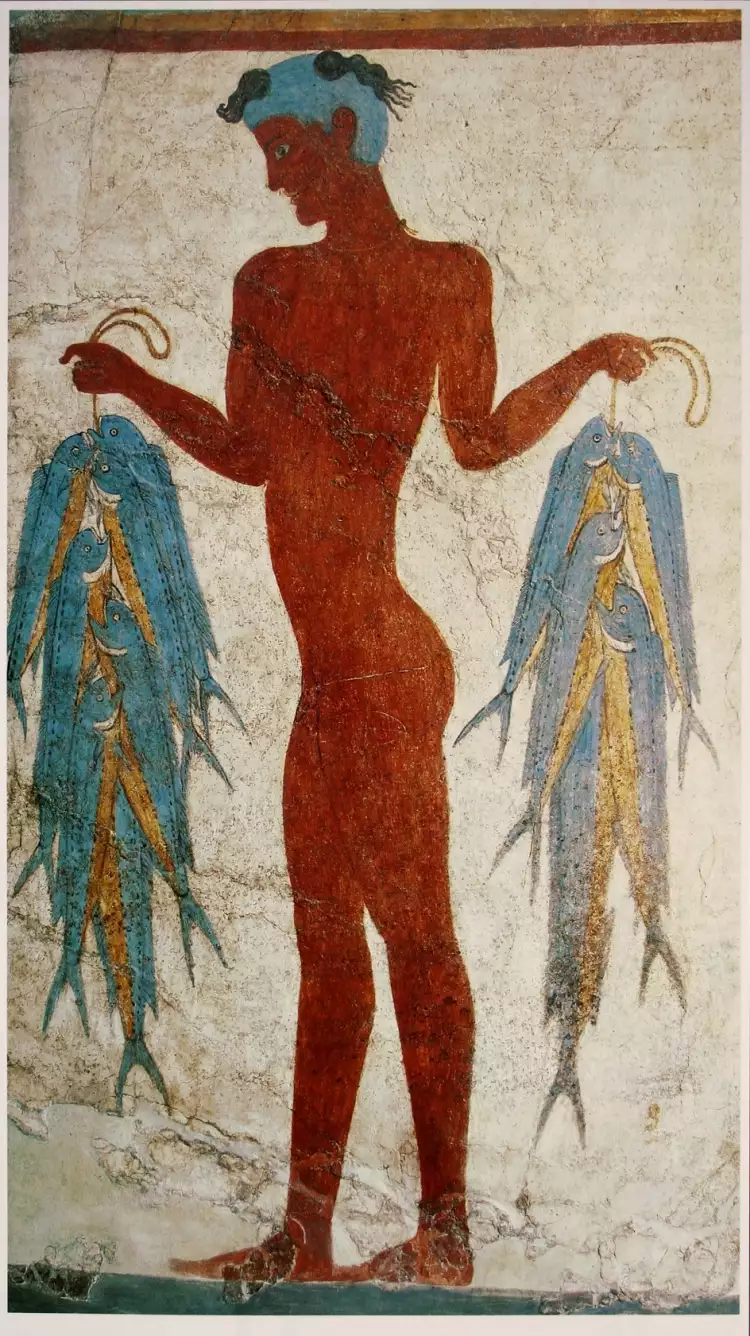 Fresco. Fresco of the Minoan civilisation from the island of Santorini, 17th century BC
Fresco. Fresco of the Minoan civilisation from the island of Santorini, 17th century BC
In the 13th century, Italy gradually developed its own original school of fresco painting. In the initial stages of development, artists primarily used the buon fresco technique. Working on wet plaster was associated with obvious difficulties due to the rapid drying of the base. Therefore, after a century, masters began to use secco and tempera paints.
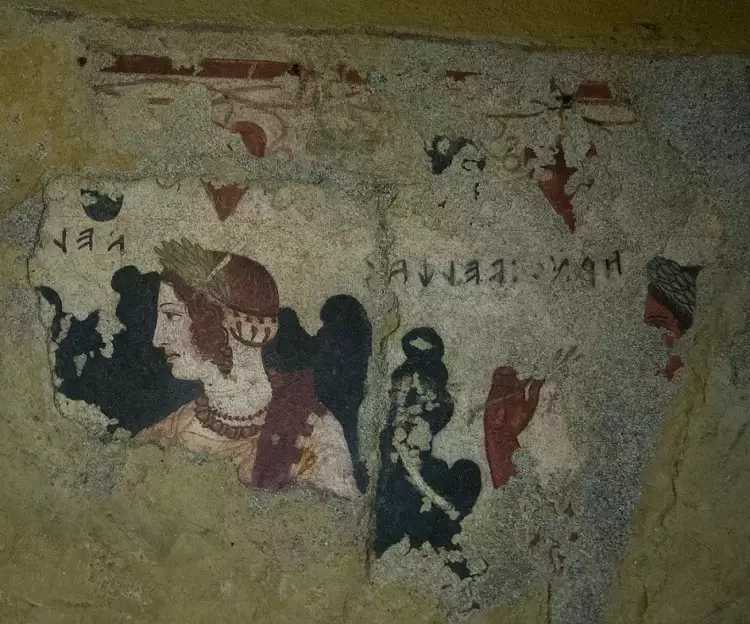 Fresco. Etruscan fresco, 4th century BC
Fresco. Etruscan fresco, 4th century BC
The beginning of the 16th century marked the widespread use of the most popular mezzo technique. From this period until the end of the 18th century, fresco painting in the Apennines experienced a true heyday. Many renowned Italian painters created monumental frescoes in churches:
- Titian (Tiziano Vecellio).
- Sandro Botticelli.
- Pietro Perugino.
- Raphael (Raffaello Santi).
- Michelangelo (Michelangelo Buonarroti).
- Giorgio Vasari.
- Tintoretto.
- Luca Giordano.
- Andrea Pozzo.
- Giovanni Battista Tiepolo.
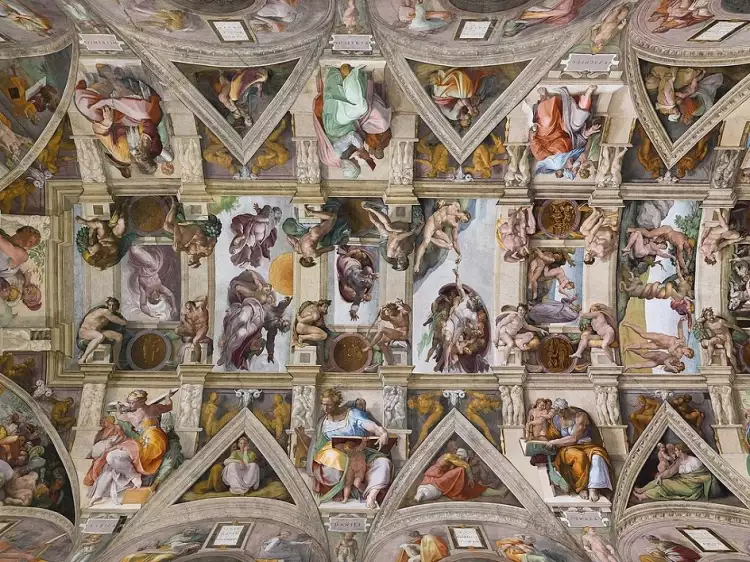 Fresco. Michelangelo. Sistine Chapel ceiling, 1512
Fresco. Michelangelo. Sistine Chapel ceiling, 1512
At the same time, outside of Italy, fresco painting gradually loses popularity. When decorating churches, preference is increasingly given to technically simpler stained glass images.
With the beginning of the 19th century, traditional fresco art definitively becomes a thing of the past. Interest in it from active artists rapidly wanes. Today, only a few enthusiasts attempt to create new works of mural painting using the plaster painting technique.
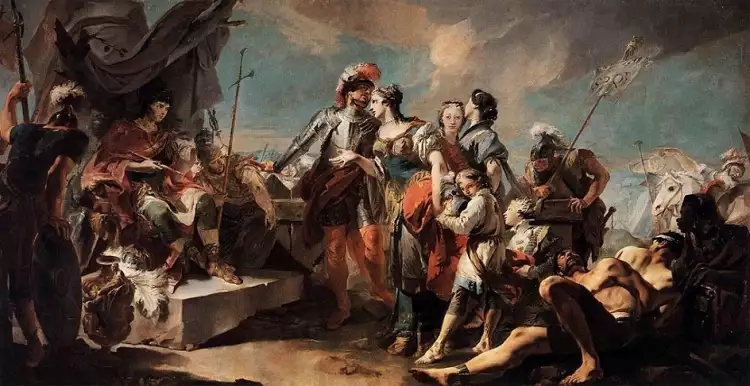 Fresco. Giovanni Battista Tiepolo. The Triumph of Aurelian, 1718
Fresco. Giovanni Battista Tiepolo. The Triumph of Aurelian, 1718
The Most Famous Frescoes
Without a doubt, the most famous frescoes are well known even to those far from the world of art. Monumental works impress with their beauty and grandeur. Among them, the following stand out:
- "The Last Supper" (1497) - Leonardo da Vinci's masterpiece depicting the Last Supper of Christ with his disciples. Unfortunately, by the end of the 20th century, the painting was severely damaged. A massive restoration campaign was carried out to save the masterpiece. Today, access to view it is greatly restricted.
- "The Raphael Rooms" (1511) - a magnificent series of paintings occupying three separate rooms in the Vatican's Papal Palace. It includes works on religious, mythological, and historical themes.
- "The Sistine Chapel Ceiling" (1481-1541) - the result of the collective efforts of the greatest Italian artists of the Renaissance era, including Sandro Botticelli and Michelangelo Buonarroti. In this lavishly decorated space, cardinals elect the Pope for many centuries.
- "The Age of Reptiles" (1947) - one of the few noteworthy works of the 20th century. The painting by American artist Rudolf Zallinger is of enormous size - 33.5 x 4.9 meters and covers an entire wall of the Yale University Museum of Natural History. The subject of the work spans a vast timespan of 350 million years.
 Fresco. Rudolph Zallinger. The Age of Reptiles, 1947
Fresco. Rudolph Zallinger. The Age of Reptiles, 1947
Fresco painting is an impressive and highly complex technique. Therefore, millions of people annually seek to see the masterpieces of great artists in their full size. The Very Important Lot portal allows art enthusiasts to participate in auctions to acquire unique antiques. On the website, you can also purchase unusual paintings directly from contemporary artists at affordable prices.
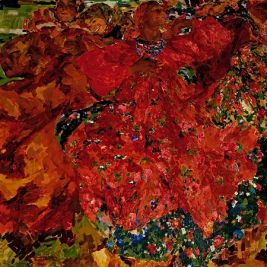 The painting " The Whirlwind" by Filipp Andreevich Malyavin is an inspiring hymn to the beauty and strength of character of Russian peasant women
The painting " The Whirlwind" by Filipp Andreevich Malyavin is an inspiring hymn to the beauty and strength of character of Russian peasant women  The Rise of Generative Art: Bridging Technology and Creativity
The Rise of Generative Art: Bridging Technology and Creativity 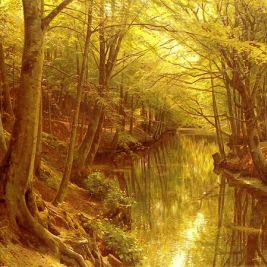 Landscape - a genre in painting: views, history, evolution
Landscape - a genre in painting: views, history, evolution 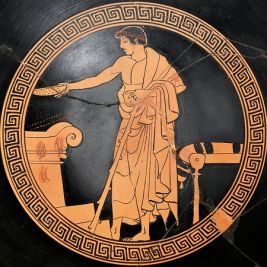 The art of Ancient Greece is an endless source of aesthetic pleasure for descendants
The art of Ancient Greece is an endless source of aesthetic pleasure for descendants 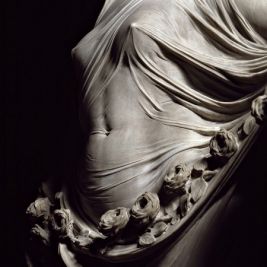 Marble Veil: Trompe-l'oeil Technique in Sculpture
Marble Veil: Trompe-l'oeil Technique in Sculpture  Animalism is a popular genre in painting from prehistoric times
Animalism is a popular genre in painting from prehistoric times 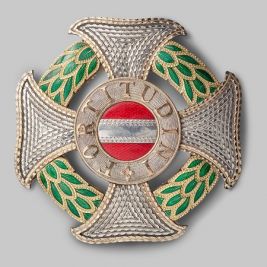 The Military Order of Maria Theresa is the most important officer's award in Austria
The Military Order of Maria Theresa is the most important officer's award in Austria  Minimalism in Painting: Essence of the Style, Characteristics, History, Minimalist Artists
Minimalism in Painting: Essence of the Style, Characteristics, History, Minimalist Artists  Silver of Great Britain - History, Styles, and Hallmarks
Silver of Great Britain - History, Styles, and Hallmarks 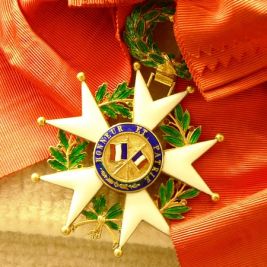 The National Order of the Legion of Honour
The National Order of the Legion of Honour